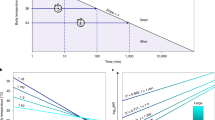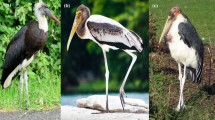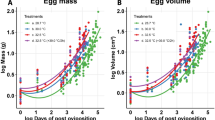Abstract
FRAIR et al.1 have recently given strong circumstantial evidence that leatherback turtles (Dermochelys coriacea) can maintain a deep body temperature at least 18° C higher than the ambient temperature of cold water. The mechanisms underlying this differential are largely unknown but are presumed to be muscular activity combined with the thermal inertia of a large body mass and an insulating layer of subepidermal fat1. Countercurrent flows have also been suspected as a heat retention mechanism1–2 but so far have not been proved. We now present anatomical evidence for a countercurrent heat exchanger in the front and rear flippers of a leatherback turtle, which is the first evidence for this kind of heat retention mechanism in a reptile.
This is a preview of subscription content, access via your institution
Access options
Subscribe to this journal
Receive 51 print issues and online access
$199.00 per year
only $3.90 per issue
Buy this article
- Purchase on SpringerLink
- Instant access to full article PDF
Prices may be subject to local taxes which are calculated during checkout
Similar content being viewed by others
References
Frair, W., Ackman, R. G., Mrosovsky, N., Science, 177, 791 (1972).
Mrosovsky, N., and Pritchard, P. C. H., Copeia, 624 (1971).
Author information
Authors and Affiliations
Rights and permissions
About this article
Cite this article
GREER, A., LAZELL, J. & WRIGHT, R. Anatomical Evidence for a Counter-current Heat Exchanger in the Leatherback Turtle (Dermochelys coriacea). Nature 244, 181 (1973). https://doi.org/10.1038/244181a0
Received:
Issue date:
DOI: https://doi.org/10.1038/244181a0
This article is cited by
-
Pros and cons for the evidence of adaptive non-shivering thermogenesis in marsupials
Journal of Comparative Physiology B (2021)
-
Living in a physical world V. Maintaining temperature
Journal of Biosciences (2005)
-
Chondro-osseous morphology of Dermochelys coriacea, a marine reptile with mammalian skeletal features
Nature (1981)
-
Lifelong hyperarousal in the spontaneously hypertensive rat indicated by operant behavior
The Pavlovian Journal of Biological Science (1978)



